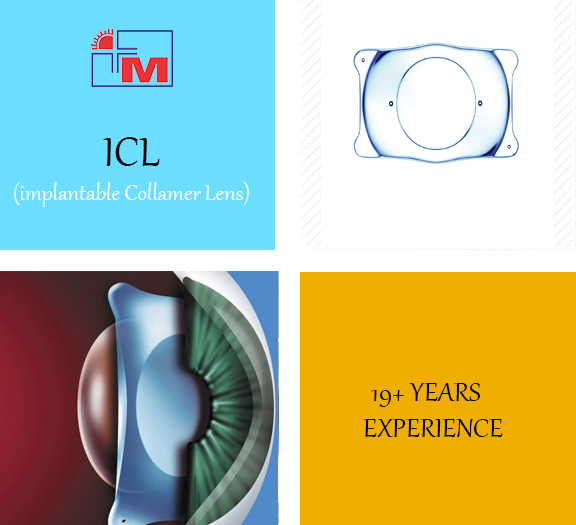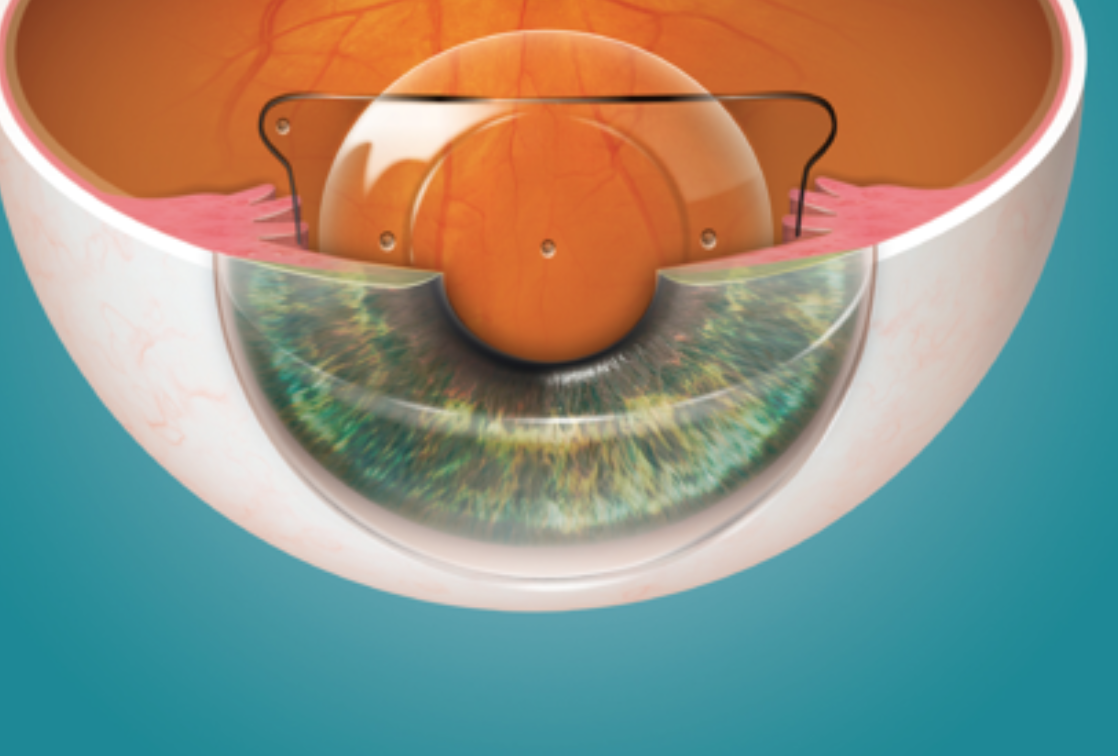
ICL (Implantable Collamer Lens)
If you wear corrective eyewear such as glasses or contact lenses and would like to be free of the encumbrance, then there are several options which provide permanent vision correction. Although LASIK surgery is the most well-known method to correct vision, there are other options for people who may not be suitable candidates for LASIK.
ICL, also very commonly referred to as Phakic IOL’s, are micro thin lenses implanted over the natural lens, inside the eye, to correct spectacle power. They are similar to contact lenses placed in eyes except that a contact lens is temporary and has to be put on a daily basis whereas ICL is put inside the eye permanently. The vision with an ICL is better than that of a contact lens because the ICL does not move and can correct cylindrical power, along with spherical power, in a better way.
ICL gives high definition vision and does not require creating a corneal flap and corneal tissue removal as in LASIK, SMILE & other laser specs removal procedures. It also does not cause any corneal dryness as seen in standard specs removal processes. The ICL surgery provides a safe and effective surgical correction of powers as high as -20D and cylindrical correction of 6D.
Who is a Candidate for ICL Surgery?
To be a suitable candidate for ICL, you should be:
- At least 18 years old
- Your specs number should be stable for about a year – minor changes do not disqualify you from becoming a candidate
- Ladies should not be pregnant or be breastfeeding
- You should not have any eye disease
- Controlled diabetes is not a contraindication.
Absolute Indications for ICL
- Eye power more than -8 dioptres up to -18 dioptres
- Cornea thinner than 450 microns
- Cylinder power of the eye more than 3.5 diopters
- Unhealthy cornea including Keratoconus
- Dry eye situations
- Any situation where LASIK is not a suitable option

Composition & the types of ICL
The EVO Visian ICL is made from Collamer, a technologically advanced lens material exclusive to STAAR Surgical. Because of the collagen, it is biocompatible with the eye .ICL is made in Switzerland, and the order for the lens is placed as per measurements of the eye. The lens is then received by courier in about two week’s time. ICL is of two types, ICL Spherical and ICL Toric. Spherical ICL lens corrects only spherical power of glasses while Toric ICL lens corrects cylinder along with spherical power of glasses.
Benefits of ICL
The ICL can give you the freedom to live a life uninhibited by the day-to-day lifestyle demands of glasses and contacts. Your favorite activities and new adventures are on the horizon usually in a few short days.
One of the most common concerns people have about the laser-based correction is that the procedure permanently changes the shape of their eye by removing corneal tissue. The advantage of the ICL is that it can permanently correct your vision yet no natural tissue is removed or reshaped in any way during the procedure. If for the unlikely reason you need or wish to remove your ICLs in the future, your doctor can accommodate you. In addition to that, one also gets the following benefits:
- Technologically advanced lens material
- Harmony with your natural eye
- No dry eyes
- High definition vision which is sharp and crisp
- Excellent Night Vision
- Preferred choice in thin corneas
- A day care procedure and most people can resume daily activities in just a few short days with clearer vision
